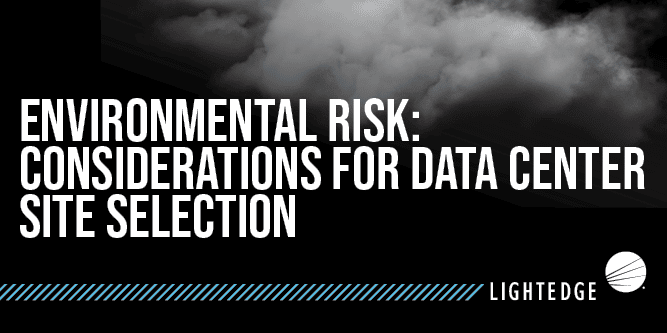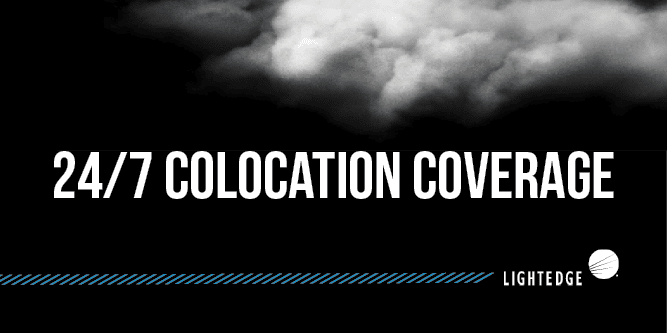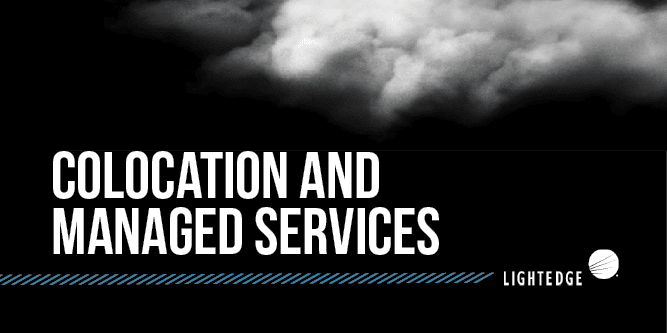Why Do We Need the Edge?
March 12, 2021

Lightedge
Author

Edge computing, especially with the rise of IoT has become a star in the tech space over the past few years, but many organizations are left wondering what the Edge means for their organization and if that’s a migration they should be making.
The move to the Edge can feel intimidating, but at the end of the day, your organization can reap countless benefits in cost, speed, latency and more. When discussing your move to the Edge, it’s important to have a clear understanding of how it works, which facets of your business would benefit most from implementing Edge infrastructure to your existing infrastructure, and also how it can future-proof your organization, ensuring its longevity as you begin to process increasing amounts of data.
What is Edge and How Does it Operate?
Many businesses create data that is most efficiently processed when the computing power is close to its generation point, rather than making the long trek to the cloud. The Edge addresses that need for localized computing. An important item to note is that, while it may interact with a centralized cloud, a cloud connection is not always necessary for Edge Computing.
The Edge acts like an outpost for your organization’s data in the context of your greater IT environment. If you are using data at a particular point, and only at that particular point, it does not make sense to store it in a cloud or datacenter far away. You know application performance and user experience matters and keeping all your data processing and storage in a centralized public cloud or data center may have a huge impact on latency and therefore user satisfaction.
Edge computing gives companies the opportunity to process their data near the source of data generation, or even on premises. And as we look to the future this becomes more and more critical, as there is data being generated by almost everything, from fridges to climate sensors as well as more predictable sources like mobile devices, factory floors and hospital biometrics. Additionally, as more organizations adopt an Internet of Things (IoT), they will a massive increase in the volume of data being created and accessed in a given day.
Much of that data generated at these smaller points is not useful to someone outside of a small subset of the larger team, so taking up space and bandwidth in the greater cloud or colocation environment does not make much sense and often leads to network congestion and even higher latency. A more decentralized Edge can make it possible to access that information quickly when users need it, but also frees up bandwidth for speedier access to higher-priority, centrally stored data.
The Edge gives devices consciousness, meaning these Edge devices can collect, process and store information, but also when they share this information with other devices that may need it through regional or centralized cloud environments. A great example is driverless cars, your driverless car will collect data from its environment including traffic, speed, weather, accidents and more. This data is most valuable to the other driverless cars in the area and low latency is critical for the safety of all other vehicles on the road. Processing this data near the source through an Edge server would be the fastest and safest option for all devices and passengers involved.
With an abstract concept like the Edge, it’s not uncommon to encounter multiple definitions, depending on who you’re talking with. Data center and colocation facilities located near data generation points can act as local sources for processing and storage.
Who Needs the Edge?
There are certain drivers to the Edge that we are seeing over and over—namely real-time visibility and traffic management. Here are a few of the most notable—you may be surprised to see similarities with your own organization in these cases as well:
- Medical facilities looking to streamline their patient monitoring systems for faster response times.
- Any organization needing feedback on automated processes in production or services.
- Any organization seeking ways to optimize their traffic and reduce latency.
- Content providers looking to distribute CDNs more widely to guarantee flexibility and customization based on traffic demands.
- Manufacturers on the hunt for solutions that will notify them of changes in their production line before maintenance is required to cut down on lost productivity.
- Energy companies looking for real-time visibility so they can make new deal utilizing their equipment during off-peak hours.
- Businesses dissatisfied with Public Cloud’s ability to deliver ono promises of elasticity and cost-effectiveness.
What the Edge Means for Your Business
Choosing to move some of your data processing to a facility much closer to the source makes sense for many businesses for a myriad of reasons. Whether you saw yourself in any of the profiles above or are looking to move toward the future before you have a need to modernize your network solutions, you can expect to receive some of the following benefits from making the leap to the Edge.
Low Latency
This is one of the Edge’s most popular selling points. While the cloud can feel expansive, its bandwidth is limited for a number of reasons. High traffic in and out of the cloud can slow down network speeds significantly, making it increasingly difficult to access data in a timely manner.
And differences in latency don’t have to be huge to matter. As we get into the nitty-gritty of nanoseconds and the like, it’s important to remember that there are many situations in which every iota of time regained matters. For example, if a doctor is performing a remote surgery, it is definitely preferable for the images and feedback they are getting from their technology to be as close to real-time as it possibly can. This could quite literally be a matter of life or death for the patient.
Even though the United States is home to a massive amount of fiber, there is no possible way that we would be able to access all the data we’d need if it were housed in centralized data centers. With IoT devices continuing to crank out more and more data, the bandwidth of centralized cloud environments would be overwhelmed, and speeds would grind to a halt, potentially leading to a poor user experience on the customer side as well as internally, leading to engagement issues.
Cost Efficiency
At the end of the day, you don’t want to be paying for bandwidth you don’t need. If you are routing all your data and traffic through a large cloud environment in a heavily populated area, you are likely facing issues with congestion, latency and paying for higher network speeds will be a costly endeavor for your organization to see minimal improvements.
While the public cloud can seem like the best option based on initial quotes, it can quickly get expensive, especially when you begin implementing more IoT devices or need to scale up to get the bandwidth you need to keep latency low. Another zero or two can quickly tack itself onto the end of the price you pay for mediocre speeds and the Edge will start looking more and more appealing.
You may be much better off moving to a less congested, more local colocation or cloud provider in order to get scalable, cost-effective storage for your needs. Your provider’s ability to scale up your solutions will be critical as IoT devices continue to generate more and more data in coming years.
Looking to the Future of IoT
As we briefly touched on earlier, IoT is a game changer in how organizations process data, simply because they find themselves working with more data than ever before. With machines and sensors and computers offering an immeasurable number of different metrics, measurements and assessments, it’s not realistic to think that all of those bits of data need to be housed in one massive, central cloud.
Realistically, most of that data is only going to be utilized, even if frequently, by a very small group of people, often close to its point of generation, so Moving workloads to the edge makes perfect sense for things like manufacturing data, information from medical devices and other more micro data.
Edge can benefit organizations across any industry. We’ve already covered the importance of Edge in medical and manufacturing industries, but we can even look to the agriculture sector for inspiration. Many farmers are attaching sensors to their livestock to monitor health and living conditions for a more efficient management of their herds, or even drones flying over their fields to check plant quality. The opportunities for Edge usage are endless and can be completely customizable to an organization’s needs, putting them back in control of their IT environments.
How to Make the Move to the Edge: Look to Local Data Centers
Since many organizations simply do not have the capacity on their IT staff to create a thriving Edge infrastructure on premises, it may be in your best interest to look to regional data center providers to provide options. A big point to consider is the distance again, from the points of data generation to the point of storage and processing. Ideally your data center provider would have facilities in your area. Local data center providers may also have multiple locations close to the markets you serve, making it an even more appealing option.
For example, if you are in a market in one state, it doesn’t solve your problem to have a data center in a major city three states away. That is not the Edge, since you’re still routing your traffic long distances and in high traffic areas. This will not help you see a decrease in latency or help you to better manage your data. Rather than finding a solution, if you go this route, you may wind up with an even bigger problem.
A solid data center provider is already located in the markets it serves. They collect, store and process data for local use, and then can communicate with other applications in the public cloud for additional hybrid functions, such as credit card approvals. Each end-to-end business feature in the future will have functions serviced by all tiers of these hybrid processing architectures to best service the customer.
Additionally, your local provider should also be able to help customize your Edge experience to be scalable based on the amount of data you are currently generating or may generate in the future. As we’ve said before, this is a huge advantage when it comes to protecting the bottom line and also gives you plenty of room to grow, if you add more IoT devices or need more servers for an increasingly remote workforce.
Lightedge is Ready to Future-Proof Your Organization
In the future, your network will be processing more data than ever before. It’s critical to consider a migration to the Edge now to secure the future of your organization. We believe in the power of the Edge so much that it’s become a huge part of our brand identity. As a top-tier compliant colocation services provider, we pride ourselves on providing a high level of availability and reliability through secure, certified data centers and dedicated staff onsite. Our customized and scalable services keep you in the driver’s seat, and your needs met.
When asked about what makes us unique from our competitors, one of the first answers is always – our network. Our history with network goes all the way back to 1996 when we were founded as an ISP. We spent over two decades making sure our network and infrastructure were scalable, redundant, and secure enough to meet the most challenging IT needs.
Between our high-speed network and our interconnected facilities, we have your needs for dynamic hybrid cloud management covered. From a dedicated physical infrastructure to a virtual delivery model, we’ve got the compliant cloud and hosting solution for your organization. Retain the level of control you want, and the amount of data isolation you require. With our local regional data centers, customers can own and operate their own equipment within our colocation facilities as well as take advantage of local cloud services according to their own needs in order to augment their existing environment. Utilizing our other data centers also provides a geo diverse backup solution in the event you need disaster recovery services.
Lightedge offers a free risk assessment from our Chief Security Officer as a free resource to all of our clients. Lightedge’s highly trained compliance and network security experts take the guesswork out of keeping your business protected. Lightedge’s top priorities include compliance and network security to guarantee that our customer’s data is protected.
Does this article have you considering a move to the edge? Reach out to one of our Lightedge Network Experts today. We have worked with hundreds of organizations across the nation to improve their latency, security, and reliability. We are ready to work with you and help you gain the same benefits.


